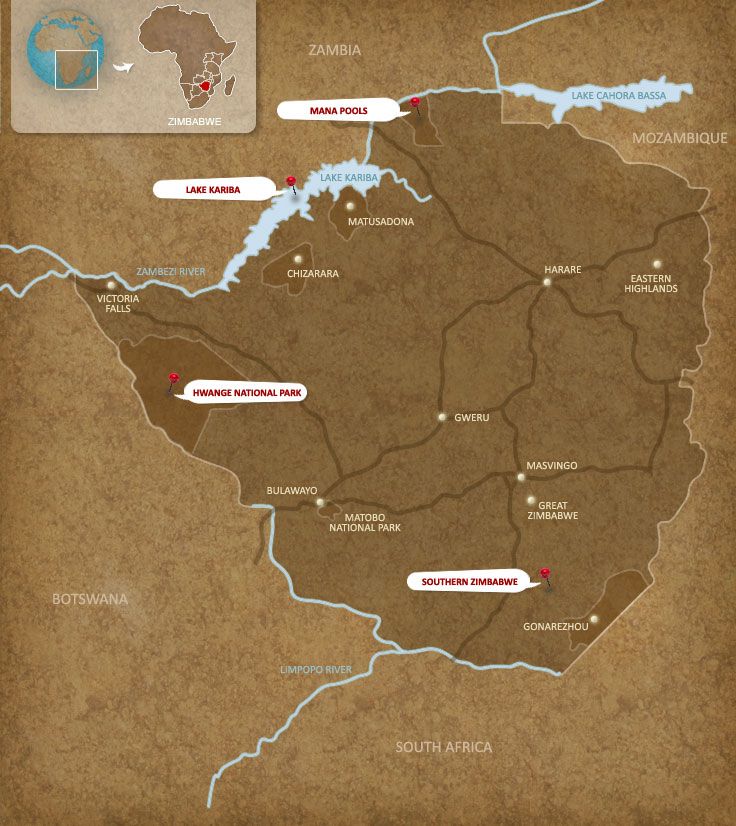
Forget what you’ve heard. Zimbabwe may have got some pretty bad press over the past few years, but anyone who decides to leave this country off their bucket list would be making a massive mistake. Visitors to Zimbabwe will tell you that, despite the political challenges, the people are extremely friendly and the travel costs are very reasonable.
Zimbabwe is the only country in Africa that boasts five UNESCO World Heritage Sites!
1. Victoria Falls
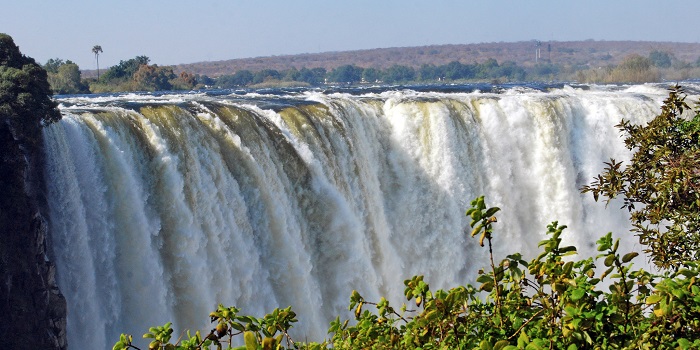
The Victoria Falls is the most famous destination in Zimbabwe. One of the seven natural wonders of the world, the Falls are simply spectacular. When in the rainy season, they form the largest curtain of falling water in the world – the sight is quite something!
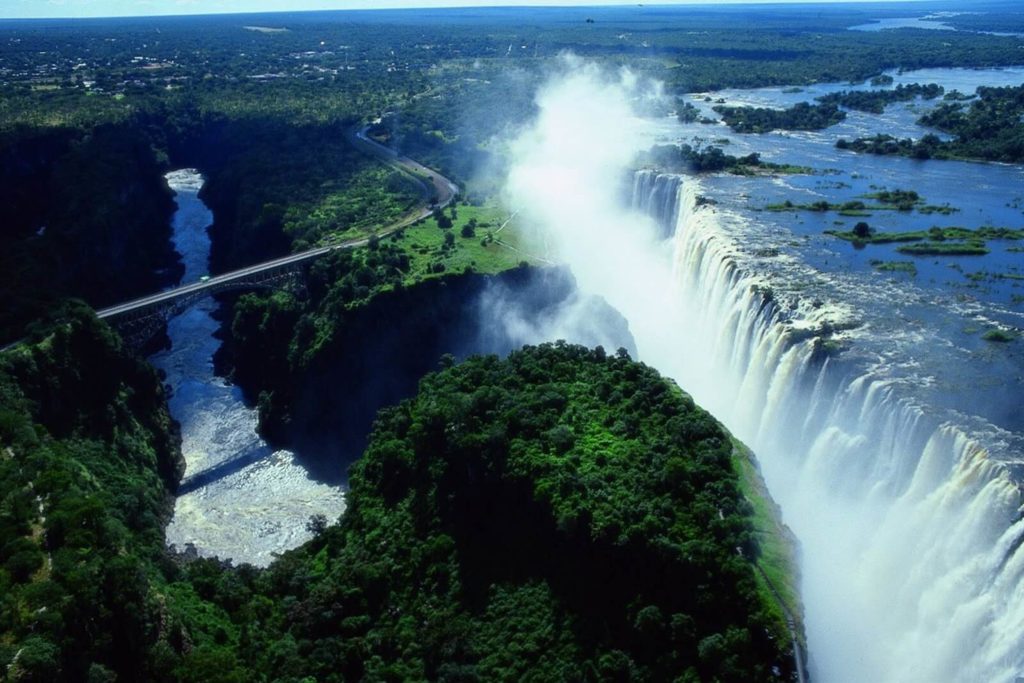
Touted as the adrenaline capital of Africa, the mighty Victoria Falls offers a number of thrilling activities, such as white-water rafting, bungee jumping, croc-cage diving and helicopter flights over the mighty Falls. ‘The smoke that thunders’ is amazing to visit all year round, and rainy and dry season guarantee quite different—but equally awe-inspiring—experiences.
2. Mana Pools
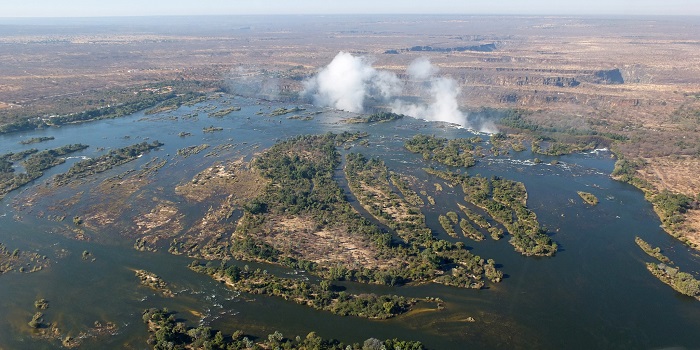
If you follow the Zambezi River downstream from Victoria Falls, you come upon yet another World Heritage Site: Mana Pools. These four massive oxbow pools were formed by the changing currents of the Zambezi over thousands of years and now attract flocks of wildlife in dry seasons. For one of the best game-viewing experiences on the continent, however, head over to Hwange National Park, home to over 400 species of birdlife, as well as one of the largest elephant herds in Africa.
3. Hwange National Park

Hwange is a town in Zimbabwe, located in Hwange District, in Matabeleland North Province, in northwestern Zimbabwe, close to the international borders with Botswana and Zambia. The town lies on the railway line from Bulawayo, Zimbabwe’s second-largest city, to Victoria Falls.
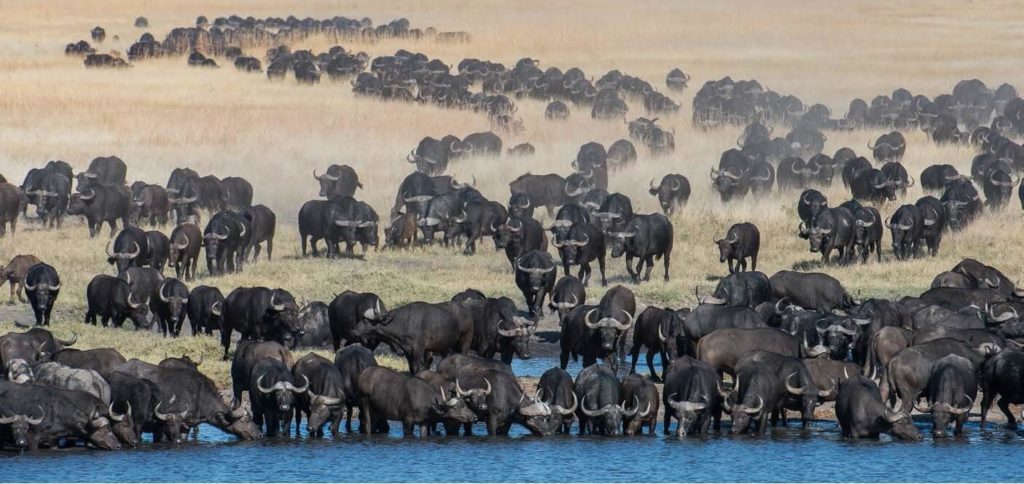
Hwange and the surrounding countryside is a centre for the industry in Zimbabwe. Hwange Colliery is the largest in the country, with proven reserves that are estimated to last over 1,000 years, at current production levels.
4. Great Zimbabwe: Dzimbadzemabwe
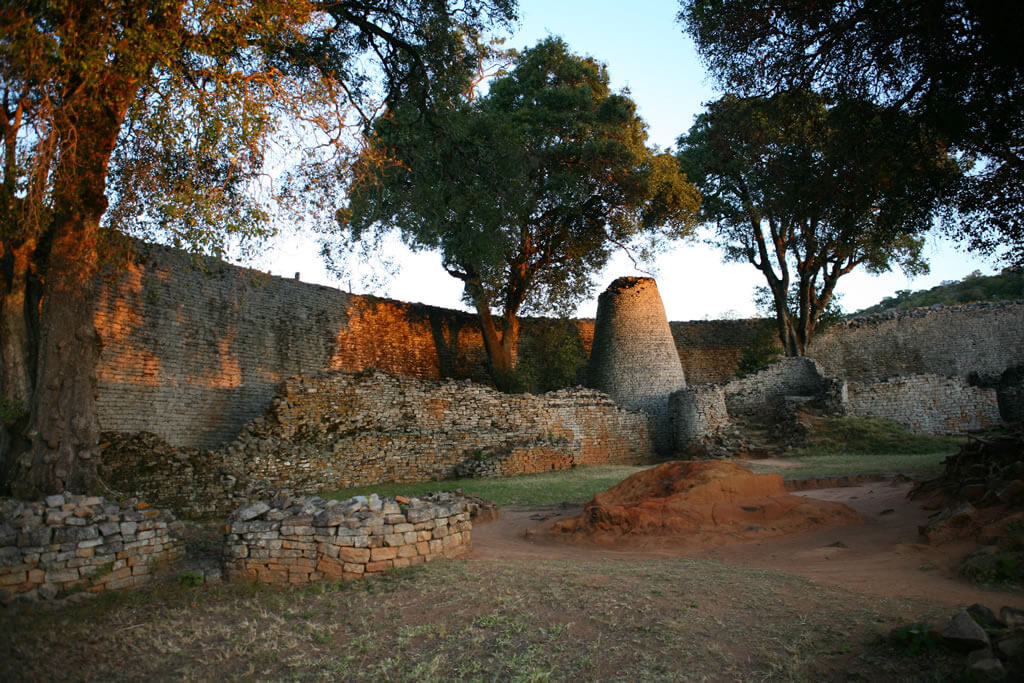
Masvingo (before 1982 known as Fort Victoria) is a town in south-eastern Zimbabwe and the capital of Masvingo Province. The town is close to Great Zimbabwe, the national monument from which the country takes its name. The town was known as Fort Victoria until 1982, when its name was briefly changed to Nyanda. Within a few months its name was again changed to Masvingo when it was discovered that Nyanda did not translate very well between dialects. It is the oldest colonial settlement in Zimbabwe, and grew up around the encampment established in 1890 by the Pioneer Column en route to their eventual destination, Salisbury. The Old Fort national monument is located in the centre of town, and was erected in 1891 as one of a series of fortifications to guard the route from Salisbury to the south. The very first cricket match in Zimbabwe is said to have taken place close by in 1890.
5. Chinhoyi Caves: Pool of the Fallen
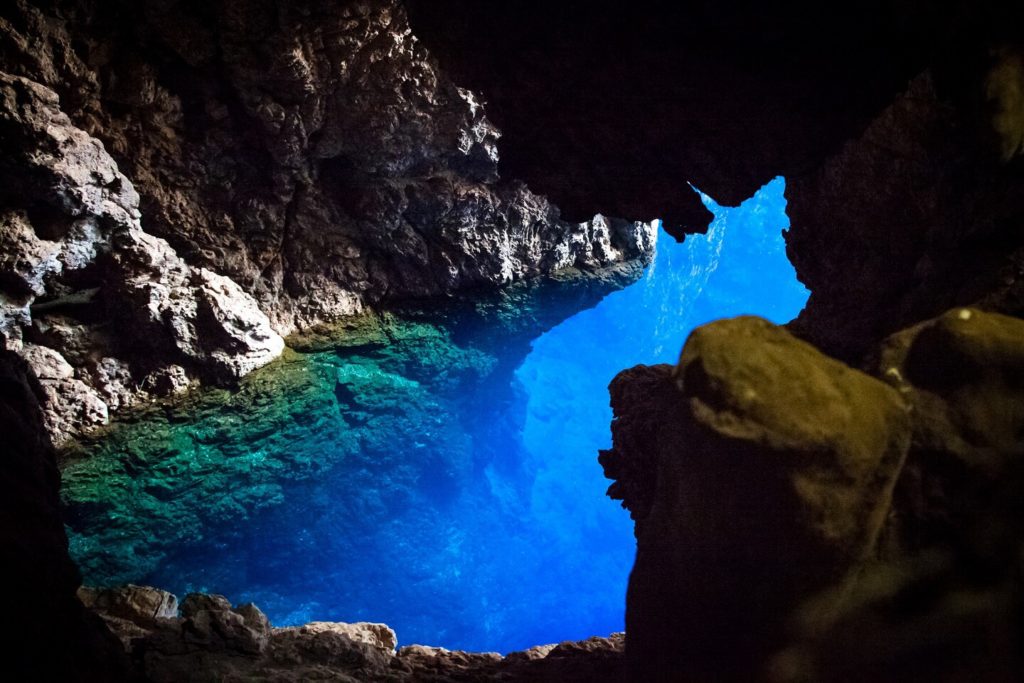
The Chinhoyi cave system is composed of limestone and dolomite, and the descent to the main cave with its pool of cobalt blue water is very impressive. This pool is popularly called Sleeping Pool or Chirorodziva (Pool of the Fallen). Divers have discovered a submarine passage leading from the Bat Cave, a sub-chamber of the Dark Cave to another room known as the Blind Cave.
6. Kariba
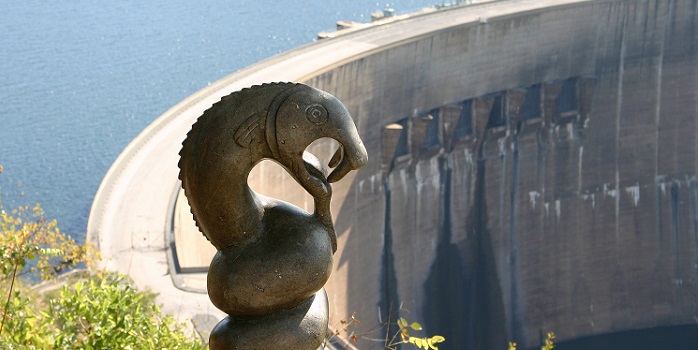
The town of Kariba, built at the site of the hydro-electric dam across the Zambezi River, is a focus for tourism, and provides a starting point for access to the vast inland sea of Lake Kariba. The little town which developed haphazardly on the hills near the site of the massive hydro-electric dam constructed across the Zambezi River in the 1950s, became known as “Kariba”. The name ‘Kariba’ is thought to be a corruption of a local word ‘Kariva’ which means “little trap”. It is believed when those who wished to construct the dam wall wanted to explain the nature of the project to the locals, they emphasised that they wanted to build a little water trap-Kariva.
7. Chimanimani
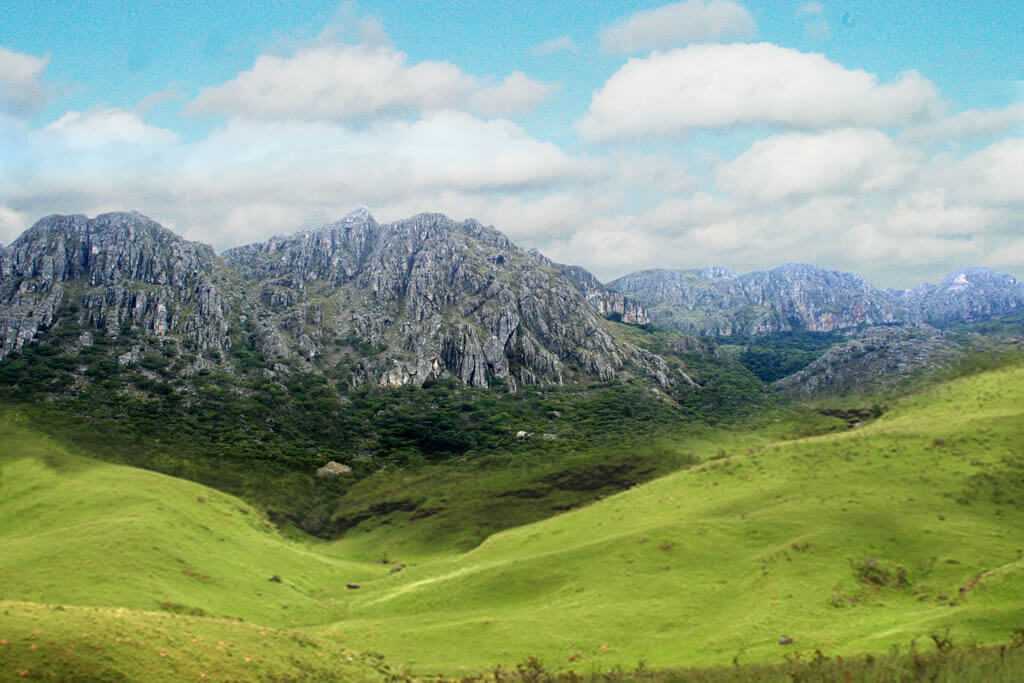
Stretching for 300km down the eastern side of Zimbabwe, bordering Mozambique, are the Eastern Highlands – the combined name for three ranges of hills and mountains – the rolling countryside and tea plantations of the Nyanga range; the granite peaks of the Chimanimani Mountains; and the green meadows and the coffee plantations of the Bvumba range. These areas are sparsely populated, making it a peaceful place to visit. It enjoys a cool, wet climate providing relief from the higher temperatures of the lower lands. Hidden within the rolling landscape are great little places to stay, beautiful scenic drives, fantastic walking trails and magnificent sights!
8. Antelope Park, Gweru
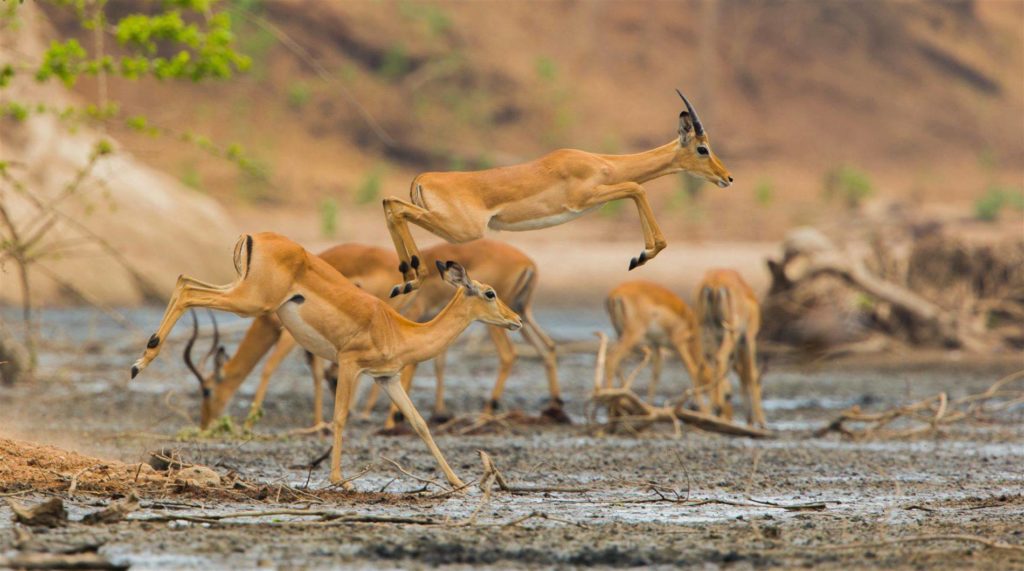
Our 3000-acre game park is home to a variety of beautiful and charismatic wildlife. See them on game drives, lion walks, horseback safari, bird walks and more. Get up close and personal with over 20 mammal species, such as zebra, wildebeest, giraffe, kudu, impala, hartebeest and discover over 150 different species of bird that call Antelope Park home, including vultures, rollers, sunbirds and hornbills.
